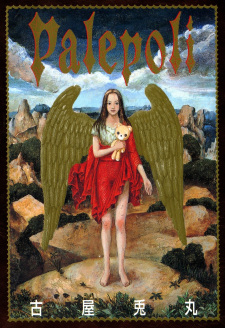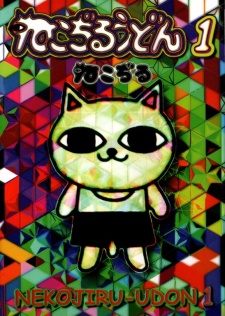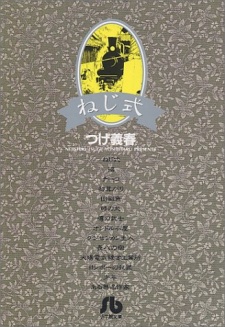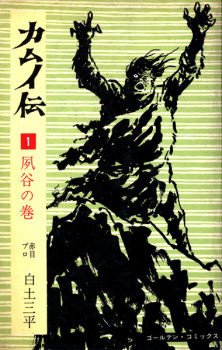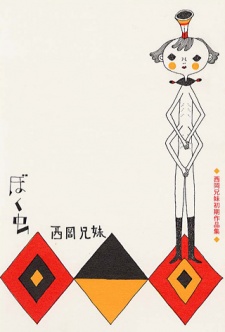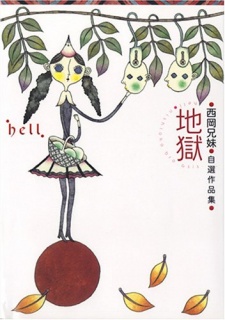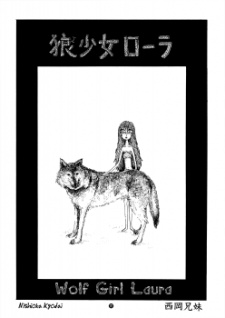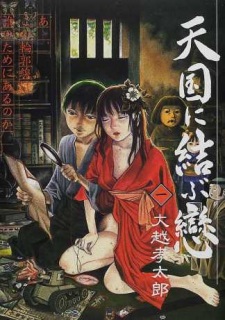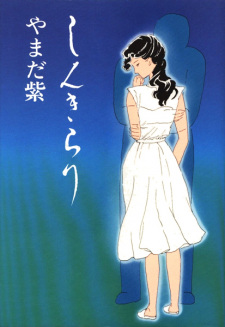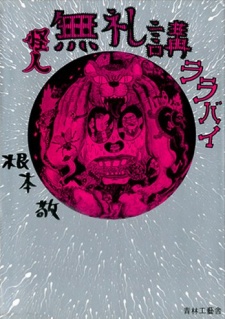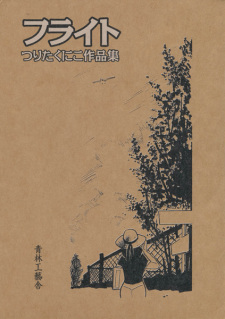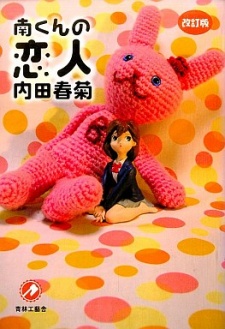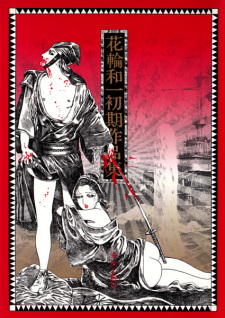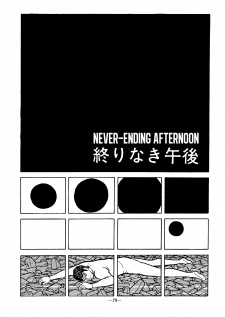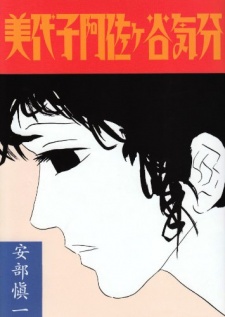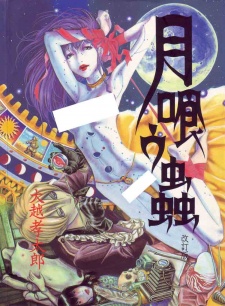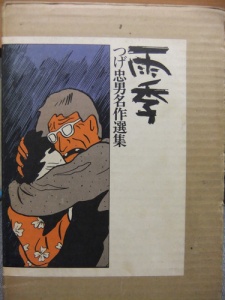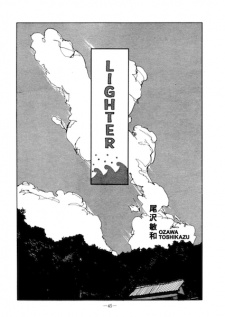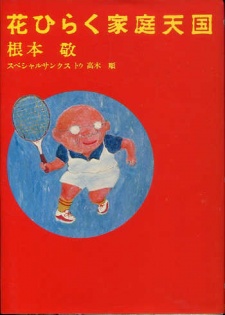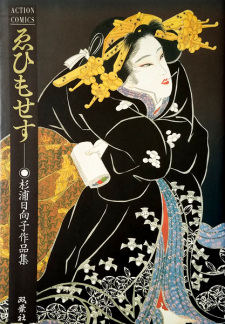- All
- Not In My List
- Reading
- Completed
- On-Hold
- Dropped
- Plan to Read
Members
Score
Newest
Title
Volume
Palepoli goes beyond the framework of standard four-panel manga and views its structure in new ways. Actually, Furuya knew nothing of conventional manga styles and methods when he started Palepoli. As a result, he created something that bore little similarity to other manga. (Source: MU)
Short stories about two white cats who have no respect and are just plain cruel. Dark humor warning. (Source: MU)
Seiichi Hayashi produced Sekishoku Elegy between 1969 and 1970, in the aftermath of a politically turbulent and culturally vibrant decade that promised but failed to deliver new possibilities. With a combination of sparse line work and visual codes borrowed from animation and film, the quiet melancholy lives of a young couple struggling to make ends meet are beautifully captured in this poetic masterpiece. Uninvolved with the political movements of the time, Ichirou and Sachiko hope for something better, but they're no revolutionaries; their spare time is spent drinking, smoking, daydreaming, and sleeping—together and at times with others. While Ichirou attempts to make a living from his comics, Sachiko's parents are eager to arrange a marriage for her, but Ichirou doesn't seem interested. Both in their relationship and at work, Ichirou and Sachiko are unable to say the things they need to say, and like any couple, at times say things to each other that they do not mean, ultimately communicating as much with their body language and what remains unsaid as with words. (Source: Drawn and Quaterly)
1-2. Miminashi Houichi 3. Gokuraku Koya 4. Yaneura no Tetsugakusha 5. Akai Mayu 6-7. Inugami Hakase 8. Muteikou Toshi
1. Nejishiki (Screw-Style) 2. Numa (Marsh) 3. Chico 4. Hatsutakegari (Mushroom Hunting) 5. Sanshouuo (Salamander) 6. Touge no Inu (The Dog of the Mountain Pass) 7. Uwasa no Bushi 8. Ondoru Koya (Ondoru House) 9. Gensenkan Shujin (Master of the Gensenkan Inn) 10. Chouhachi no Yado 11. Ooba Denki Mekki Kougyou-sho (Oba's Electroplate Factory) 12. Yoshiboo no Hanzai 13. Shounen 14. Aru Mumei Sakka
Set in feudal Japan, this tells the story of a low-born ninja who tries to flee his clan. The series combines historical adventure with social commentary and themes of oppression and rebellion that reflect Shirato's leftist convictions. (Source: Wikipedia)
1. Flower 2. Color Color 3. Ikasu Onna (Cool Lady) 4. Drip Words 5. Polyethylene yori Ai wo Komete 6. Yoru to Haru to Love 7. Déjà vu 8. Flame 9. Aru Hitotsu no Mado no Naka ni 10. Aoiro ga Nokoshita Mono e 11. Kuchizuke (Kisses) 12. Kusare Onna (Heartless Bitch) 13. Paint in Watercolor 14. Sugar 15. Boku no Naka ni Saku Marude Ga no Youna Hana 16. Flower 17. Itaitashii Love II (Painful Love) 18. Liquitex 19. Water
Comics Underground Japan presents the wild, subversive world of Japan’s most accomplished underground comics artists. Some of the dozen artists included in this anthology will be familiar to followers of manga; others make their American debut in these pages. The richly imaginative stories in this volume show a great range of graphic style, from painstakingly detailed craftsmanship to exuberant, maniacal renderings. At the heart of each work in this anthology is a unique personal vision and a fierce artistic compulsion–these manga artists are the misfits of the art form, and they are its visionaries. (Source: Blast Books) Included stories are: 1. "Hell's Angel" by Yoshikazu Ebisu 2. "It's All Right if You Don't Understand" by Yoshikazu Ebisu 3. "Steel Pipe Melancholia" by Masakazu Toma 4. "Future Sperm Brazil" by Takashi Nemoto 5. "A Love Like Lemons" by Carol Shimoda 6. "Selfish Carol's Summer Vacation" by Carol Shimoda 7. "Mercy Flesh (Jiniku)" by Kazuichi Hanawa 8. "Don Quixote #1 & #2" by Yasuji Tanioka 9. "Planet of the Jap" by Suehiro Maruo 10. "Mary’s Asshole" by Hanako Yamada 11. "Volvox" by Pan Migawa 12. "Bigger and Better" by Muddy Wehara 13. "Laughing Ball" by Hideshi Hino 14. "Cat Noodle Soup" by Hajime Yamano & Nekojiru
A collection of sixteen early works by Nishioka Kyodai, including their three-part debut series. As always the stories range from the whimsical to the surreal, with tales of serial killers, bird women, and a man who one day wakes to find himself with a pouch like a kangaroo. (Source: MU) 1. Jump 2. Boku Mushi 3. Aru Kinzoku Bat Jisatsu 4. Mono no Okibasho 5. Torikago 6. Kaze no Fuiteiru Hi 7. Ame no Futteiru Hi 8. Nichiyoubi 9. Tanjoubi 10. Satsujinki-P no Noroi 11-12. Yoru 13. Harigane 14. Boku ga Koroshita Mono: Tobirabito 15. Boku ga Koroshita Mono: Kangaroo no Matsuei 16. Boku ga Koroshita Mono: Shinkei
Weird, tripped-out collection of one-shots. Subtly twisted, delicately detailed but with a strong line, with elongated bodies and shades of Art Deco. Somewhat reminiscent of both Gorey and Dali by way of Edvard Munch, but the style is unique and distinctive and very much the artist's own. About as far as you can get from manga and still be in the same country.
A collection of Mizumaru Anzai's one-shots from Garo. 1. Nishikaze no Fuku Machi 2. Hikishio no Koro 3. Nobi 4. Haru Hayate 5. Magarimichi 6. Yuki-doke no Koro 7. Ki Tonbo 8. Shuuka Tetsudou (A Train at the End of Summer) 9. Teitai Zensen 10. Fuyu Machi 11. Kitsune-gari 12. Mugibue 13. Hana Monogatari
Laura was abandoned in the forest as a baby and raised by wolves.
A collection of short stories telling the tales of peasant farmers in rural pre-modern Japan, and the lives they live. (Source: MU)
A tale of conjoined siblings: war, friends turned enemies, and life with a traveling circus.
Set in an apartment complex on the outskirts of Tokyo, Murasaki Yamada's Talk to My Back explores the fraying of Japan's suburban middle-class dreams through a woman's relationship with her two daughters as they mature and assert their independence, and with her husband, who works late and sees his wife as little more than a domestic servant. (Source: Drawn & Quarterly)
In this collection of hauntingly elliptical short stories, Oji Suzuki explores memory, relationships, and loss with a loose narrative style, filling each tale with a sense of unfulfilled longing. He plumbs the dissolute depths of human psychology, literally bathing his characters in expansive shadows that paradoxically reveal as much as they obscure. (Source: MU) 1. Match Ippon no Hanashi 2. Omoide Monogatari 3. Ame no Iro 4. Hoshi no Seika 5. Yoru 6. Tabi no Hitoya 7. Chijou de Nagameta Tsuki 8. Toumei Tsushin 9. Samishii Namae
1. Akai Hana (Red Flowers) 2. Ri-san Ikka 3. Tsuya 4. Umibe no Jokei 5. Nijibetamura Jiken 6. Futamata Keikoku 7. Honyaradou no Ben-san 8. Jonin 9. Furuhon to Shoujo 10. Mokkiriya no Shoujo 11. Yanagiya Shujin 12. Shomin Onyado 13. Kinjo no Keshiki
Very clever, very subtle - even when her words are very direct, Kan Takahama tackles subjects as diverse as suicide pacts, mermaids, making a porno film and bar room chat with a robust yet delicate grace. Probably the most talented mangaka to have recently emerged from Japan, Kan Takahama's art and story telling will surprise when least expected... (Source: Ponent Mon) 1. Saigo no Onna-tachi (Women Who Survive) 2. Aoi Ehon (Kinderbook: A Picture Story for Melancholic Girls) 3. Highway, Motel, Skyline (Highway, Motel, Skyline [2001 amid a heat wave]) 4. Kahinashiko no Koi (Red Candles, Futile Love) 5. Gohon Ashi no Kage (Five-Legged Shadow) 6. Minnano Blues (Minanogawa Blues) 7. Asoko ni, Utsukushii Futatsu no Taiyou (Over There: Beautiful Binary Sins) 8. Mont Saint-Michel
Seiichi Hayashi (b. 1945) was a leading figure in Tokyo's hotbed of avant-garde artistic production in the 1960s and '70s. He is best known for his lyrical and experimental manga for Garo, the famous alternative comics magazine. The present volume collects a handful of Hayashi’s most important manga from this period, including “Red Dragonfly” (1968), “Yamauba’s Lullaby (1968), and “Gold Pollen” (1971). Published here in their original full color, these stories mix traditional Japanese aesthetics with Pop Art sensibilities, and range in topic from the legacies of Japanese rightwing nationalism and World War II, to the shadow of America over 60s Japanese youth culture. (Source: PictureBox)
A seminal work of manga from the mid-1980s, Monster Man Bureiko Lullaby is a Candide-esque tale–if you can picture Candide as a mutated sperm brought to life by radioactivity. Unremittingly explicit, this is the comics equivalent of Henry Miller at his best: direct, honest and insightful while simultaneously beautiful and grotesque. (Source: PictureBox)
1. Hitobito no Maisou 2. Kamigami no Hanashi 3. Nonsense 4. Onna (Woman) 5. Konna Hanashi 6. Anti 7. Ikiru Tame no Tousou 8. Agaki 9. Jinroku (Mr. Jin Roku) 10. Rokunomiya Himeko no Higeki (The Tragedy of Princess Rokunomiya) 11. Eikou e no Dasshutsu 12. Kyoujin Nikki 13. Madame Haruko 14. Oto (Sounds) 15. Aru Kame no Hanashi 16. Sainan (Calamity) 17. 65121320262719 18. Boku no Tsuma wa Acrobat wo Yatteiru (My Wife Is an Acrobat) 19. Yuuko no Hibi (Yuko's Days) 20. Sora wa Aozora Kumo Hitotsu (The Sky Is Blue with a Single Cloud) 21. Money 22. Max 23. Ton, Ton, Oneesan 24. Gokkan (Arctic Cold) 25. R 26. Umihebi to Hokuto Shichisei (The Sea Snake and the Big Dipper) 27. Flight
Everyone thinks Chiyomi has disappeared, and suspicion naturally falls on Minami, identified as her boyfriend in her diary. But after inexplicably finding herself in such a state, Chiyomi moves in with him. As depicted in Uchida’s clean, loose line and Zip-a-Tone textures, the two soon adapt to the unusual circumstances, devising ways for Chiyomi to use the toilet, brush her teeth and hair, attend classes, and more. After some silly sequences of trial and error, they even figure out a sex life. But in addition to learning how to navigate logistics, jealousy, and the cat, they’re also growing up (if not taller). Uchida uses the conceit of a teen couple literally learning how to take care of one another to examine gender dynamics and intimacy. (Source: Fantagraphics)
1. Nikuyajiki 2. Ennyuu 3. Enjuu 4. Akai Yoru 5. Karyuudo 6. Fukushuu: Tokage Onna 7. Shuuaku: Gokiburi Otoko 8. Kaidan Neko 9. Sutego Monogatari 10. Buta Onna 11. Tatakau Onna 12. Nurikomegura 13. Nihon Youkai Odorozoushi 14. Koushou 15. Roppukudou
A man wakes up in a pile of rubble without any memories. Confused, he stumbles upon an entranceway with stairs that lead down into a strange facility littered with bodies. After a woman calls out to him for help, the two make their way to a time machine to travel back to 20th-century Tokyo—where the man allegedly came from. But upon returning to his supposed world, the man begins to question his way of life and whether this truly is the place he calls home. [Written by MAL Rewrite]
One of Hayashi's early contributions to the alternative manga magazine Garo, Flowering Harbour is a love story filtered through the aesthetics of enka music, known informally as "Japanese blues". (Source: Breakdown Press)
1. Tengoku de Miru Yume (A Dream in Heaven) 2. Henri to Anne no Ballad (The Ballad of Henri and Anne) 3. Seventeen 4. Umibe no Machi (Seaside Town) 5. Machi no Uma (The Town Horse) 6. Bouya, Kawaii Bouya (Little Boy, Cute Little Boy) 7. Vietnam Touron (The Vietnam Debate) 8. Kanashii Max (Sad Max) 9. Kyodai na Zou II 10. Summer Course 11. Soda Fountain 12. Minato no Marie (Harbour Marie) 13. Bunruigaku Nyuumon 14. Chee-Chee Hat 15. Keikigeki: Sabaku no Medama (A Light Comedy: Eyeball of the Desert) 16. Pickles-gai Ibun (Strange Tales of Pickles Street) 17. Ding Dong Circus 18. Bad Moon (The Bad Moon) 19. Fukurou to Koneko-chan 20. Tawagoto-shi-tachi Kotenteki Abekobe Lock 21. 6-gatsu no Inseki 22-23. J.J. Picard Shi no Hanashi no Tsuzuki 24. Boku no Debuinko-chan 25. Scat Taisa no Kiroku 26. Shoukasen Otoko 27. Tabi no Tenshi 28. Dokusho no Tashinami 29. Dr. Aesop 30. Doutoku Manga 31. Muteki no Zokubutsu 32. Sorezore no Asa 33. Suna ni Kieta Tamida 34. No Kid No Cry 35. Make a Fake 36. Hijou no Okite 37. Half Crazy
A mysterious planet appears over Earth, bringing with it unparalleled bliss. If you can afford the space trip, that is. (Source: MU)
1. Miyoko Asagaya Kibun 2. Guntou 3. Burai no Omokage 4. Asagaya Shinjuu 5. Pistol 6. Kawa 7. Shizuka na Pink 8. Rakkasan 9. Renai 10. Kiss
A kaleidoscope of surreal desires. 1, 8. Tsuki Kuu Mushi 2. Niku to Genkai 3. Panorama Kyoukitan 4. Akumu no Mori no Mankai no Shita 5. Motif 6. Orogaki-ke no Musume 7. Sashidashinin wo Mitara Tokumei Kibou da Korya
1. Kuzu no Ichi (Trash Market) 2. Uki 3. Yoru yo Yuruyaka ni (Gently Goes the Night) 4. Tooi Natsu no Fuukei 5. Shiosai
During the summer, a young man decides to work at a manual labor job together with some elderly coworkers. Although the job itself is relatively easy, he finds it challenging to get along with others due to their age difference. [Written by MAL Rewrite]
A silent one-shot consisting of seven different stories.
1. Jigoku ni Ochita Kyoushi-domo 2. Katte ni Shiyagare 3. Shigoto Fuukei 4. Tsukareru Shain-tachi 5. Ai no Arashi 6. Chounouryoku 7. Mayonaka no Party 8. Jinginaki Tatakai 9. Jigoku no Salaryman
A couple have sex in the park at night.
Fed up with his life, a boy begs his father to let him leave home to go study in Tokyo. Three months later, the boy writes a letter home, detailing all of the strange nuances of city life. But despite how different life is in the capital, the boy always tries to find the positive side to things so that his parents will not worry. [Written by MAL Rewrite]
A collection of Junko Mizuno's one-shots and illustrations published between 1996 and 2002.
Ultraman is a kaiju-fighting hero during the day but a completely different being at night. Coming home to an unkempt apartment, the exhausted warrior of peace only wants to unwind and take care of himself. However, there are a lot of inconveniences in his way. From the bathhouse being too far away to running out of food to eat, Ultraman's life outside of his epic battles may be just like the average person's. [Written by MAL Rewrite]
1-3. Tsuki no Omoide (Memories of the Moon) 4. Atsui Hibi 5. Shounen Knife 6. M-kun no Tokage no Shippo 7. Namazu 8. Kinokogari no Tasogare 9. Yamagarasu 10. Yuuyake 11. Circus no Koro 12. Sugi no Kafun 13. Kurukuru Super Road 14. Mizutama no Apron 15. F-shi no Hige 16. Mushi no Gyoushounin 17. I Am the Rock 18. High-heels to Denshinbashira 19. Power 20. Musashi Yaboshoku 21. Blowin' in the Wind 22. Tomorrow 23. UFO no Jikan 24. Kaze no Yukue
A silent one-shot about an artist and his 4-koma manga.
1. Chikunou Sandai 2. Shoku no Tankyuusha 3. Ahoudori 4. Hakuchou no Mizuumi 5. Taboo 6. Dream Island
While walking alone one night, a man runs into a mysterious puppeteer. Soon after the meeting, everyone he knows begins to act oddly.
1. Seishun Musebinaki 2. Go Go Mukoumizu 3. Makezugirai no Gyakushuu 4. Mama to Yobarete Sankagetsu (Three Months Since You Called Me Mama) 5. Teisou no Hikari 6. Otoko no Machikado 7. Namida no Naka no Junjou 8. Zoku Namida no Naka no Junjou 9. Ittetsu no Ongaeshi 10. Dolphin 11. Tsupari no Hatsukoi 12. Hanahiraku Katei Tengoku
1. Yume no Kingyo 2. Shounen 3. Aru-chuu Shoujo 4. Suki Kirai (Picky) 5. Kyuushoku 6. Koibito 7. Kingyo 8. Natsuyasumi 9. Haseo Akira Soushi 10. Otousan no Ichiban Nagai Hi 11. Himitsu Shuppan 12. Yoshidayama Shinjuu 13. Circus no Uma
A collection of Shigeru Mizuki's one-shots originally published in Garo.
A fish-faced scientist hears pleasant music in the distance. As the captivating melody draws him closer, he realizes its true value and decides to capture it—sending it off to a distant neighbor. [Written by MAL Rewrite]
A posthumous tribute collection of early manga, interviews, and diary entries chronicling the life and career or Hanako Yamada.
A collection of Yuko Tsuno’s one-shots from Garo. 1. Gyakushima 2. Slow Hot Wind 3. A Taste of Honey (Kitaku) 4. A Taste of Honey (Float) 5. Pale Beryl 6. Fantail 7. Canary 8. Kikukaten 9. Identical Twin's Garden 10. Mirror Scrying 11. Sundish Memo 12. Swing Shell 13. Rinpun Yaku 14. Citrine Citron 15. Mi wo Yoko Taete 16. Mirror Scrying II 17. Kisetsufuu 18. Hirihiri Suru (Midori) 19. Energy (Remix)
1. Tokyo Goodbye 2. Circus 3. Shousuke Atari de 4. Mukou no Ramunean 5. Natsukashi no Yoru 6. Naki no Ame 7. Kaki wo Kamu 8. Kimi to Tabisuru 9. Ano Shimakageyuki
A surreal, stream-of-consciousness short story in which robots go to war with monsters. (Source: ANN)
A hiker seeks out the town of Armadillo which is marked on their map, but they soon encounter a person who tells them no such place exists.
1. Sodemogi-sama 2. Bouzu no Zange 3. Mozu 4. Tsuugen Muronoume 5. Gake 6. Ya Ku So Ku 7. Kakenukeru 8. Hanageshiki Kitsune Koudan 9-11. Hibi Yuuyuu 12-13. Kira Kuyou
1. Kaiki Shininchou 2. Tsuriotoshita Sakana 3. Hakanai Yume 4. Yume no Shokuryou 5. Namahage 6. Ashiato no Kai 7. Senninshu 8. Sunakake Babaa 9. Shimi 10. Hakamori Mushi 11. Seinaru Wa
1. Chishikijin no Report 2. Boku no Mura wa Heiwa Datta 3. Benkyou suru Otome-tachi 4. Penis ni Shisu 5. Fukakujitsusei no Kazoku 6. Watashi wa Baka ni Naritai 7. Shokuseikatsu to Ningen 8. Futsuu no Hitobito 9. Match-uri no Shufu 10. Kyoutei Jidai 11. Geijutsuka wa Okotta 12. Shoujo no Himitsu 13. Salaryman wa 2-do Iraira suru
(No synopsis yet.)
1. Roudou 2-gou (Wide-ban) 2. Truck Yarou Mousou Ichibanboshi 3. E 4. Heisei Momotarou 5. 8-ji da yo! Zenin Shibou 6. Sonogo no Jingi naki Norajin 7. Kuroi Kakutouka 8. Goshoku no Shiru 9. Roudou 2-gou 10. Rock no Shiru 11. Hiyoko Ball 12. Bouryoku Shashinka Homma Takashi (Shi) 13. Mamushi no Chihara Kyoudai 14. Gakkou (School) 15. Kani no Carnival 16. Ninjou Ningen Hakaider
1. Meitou 2. Osen 3. Sanka 4-5. Kuki 6. Rinji News 7-8. Jigoku 9. Oobeya 10. Daruma-san Daruma-san Niramekko shimasho Warau to Make yo Appuppu! 11. Kuremutsu 12. Fuji ga Saita 13. Arasa no Saaa 14. Yasubee 15. Chou wo Mita! 16. Goze no Nagare 17. Shimaiburo 18-25. Boroboroboro 26. Saisetsu ni Mau
